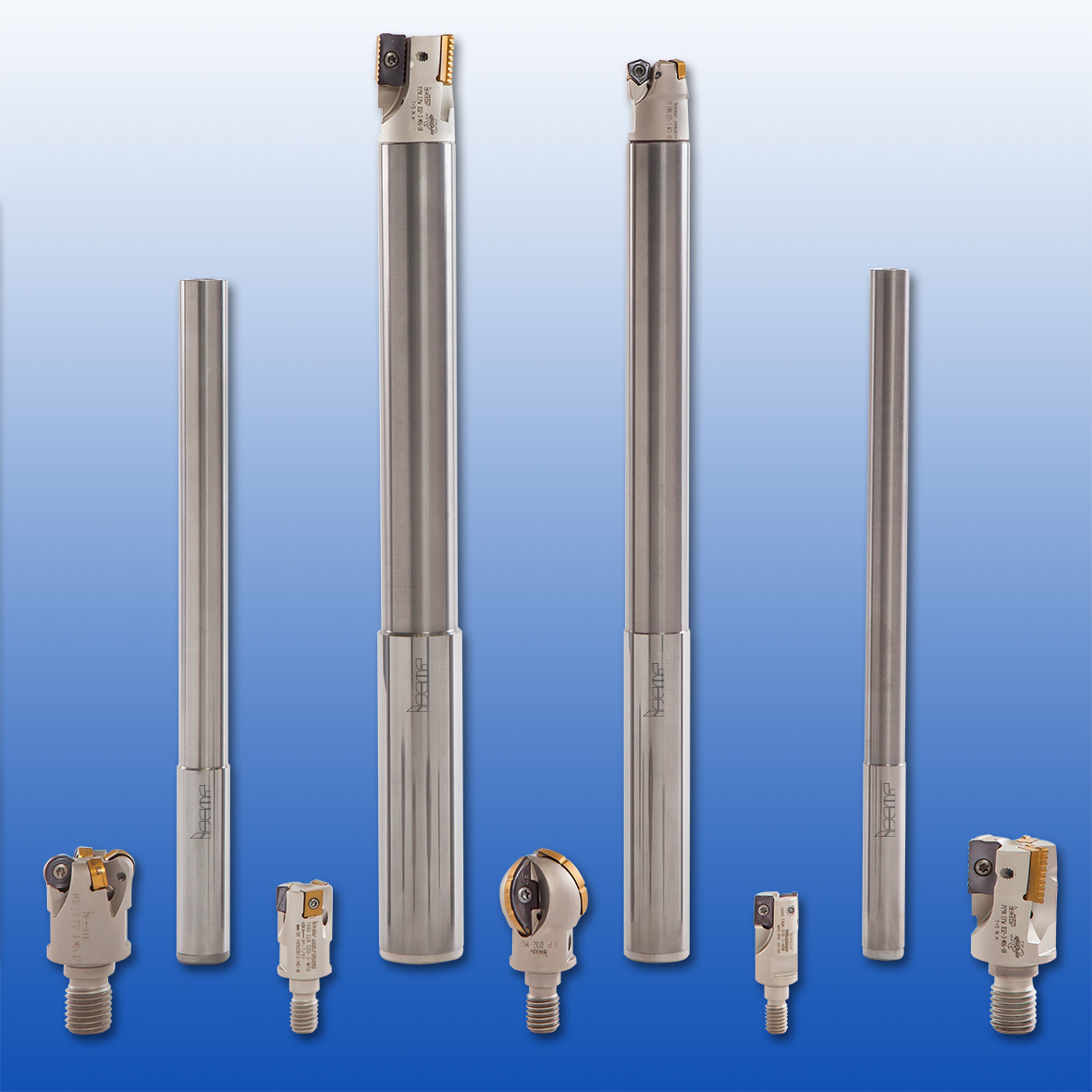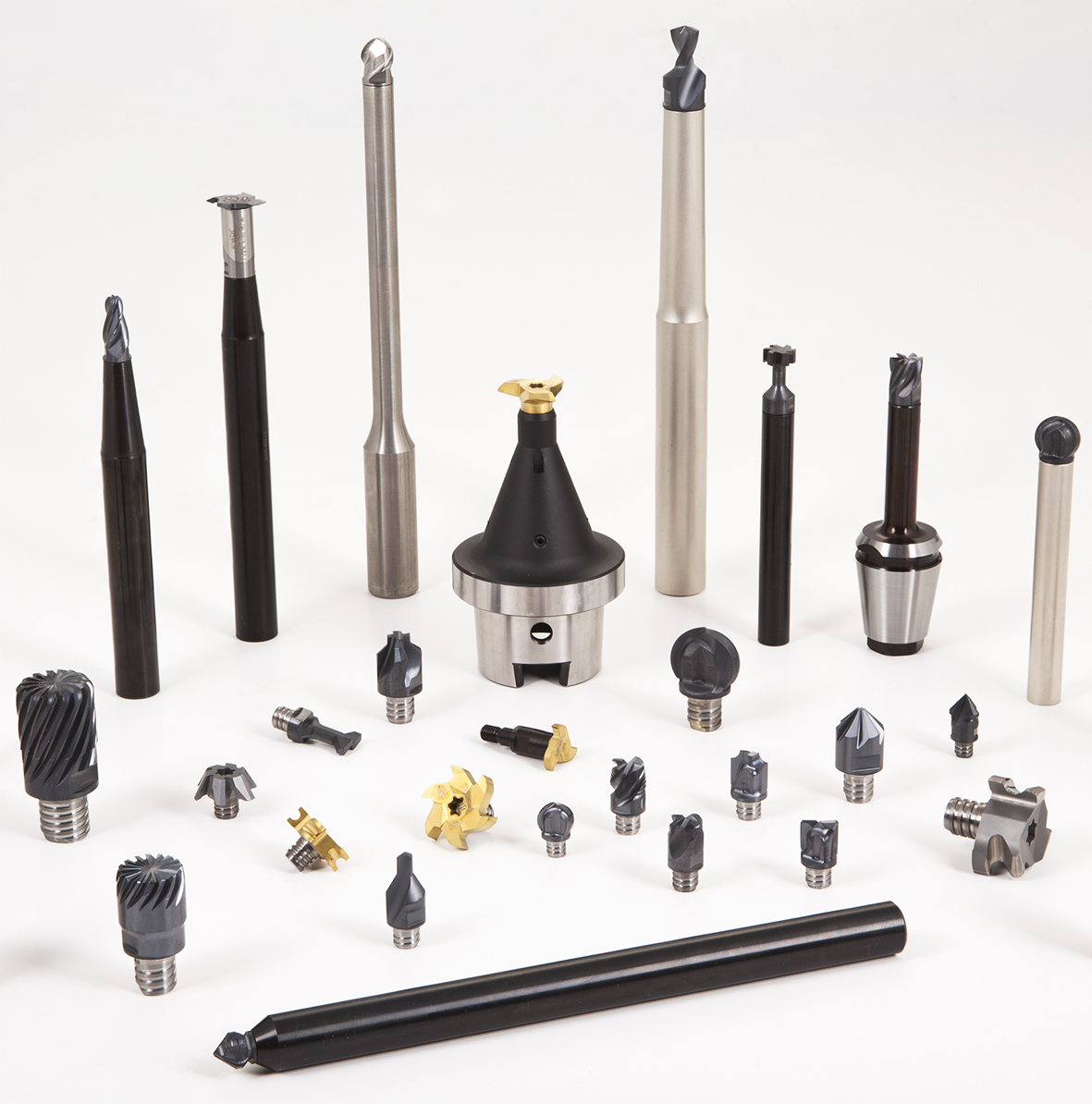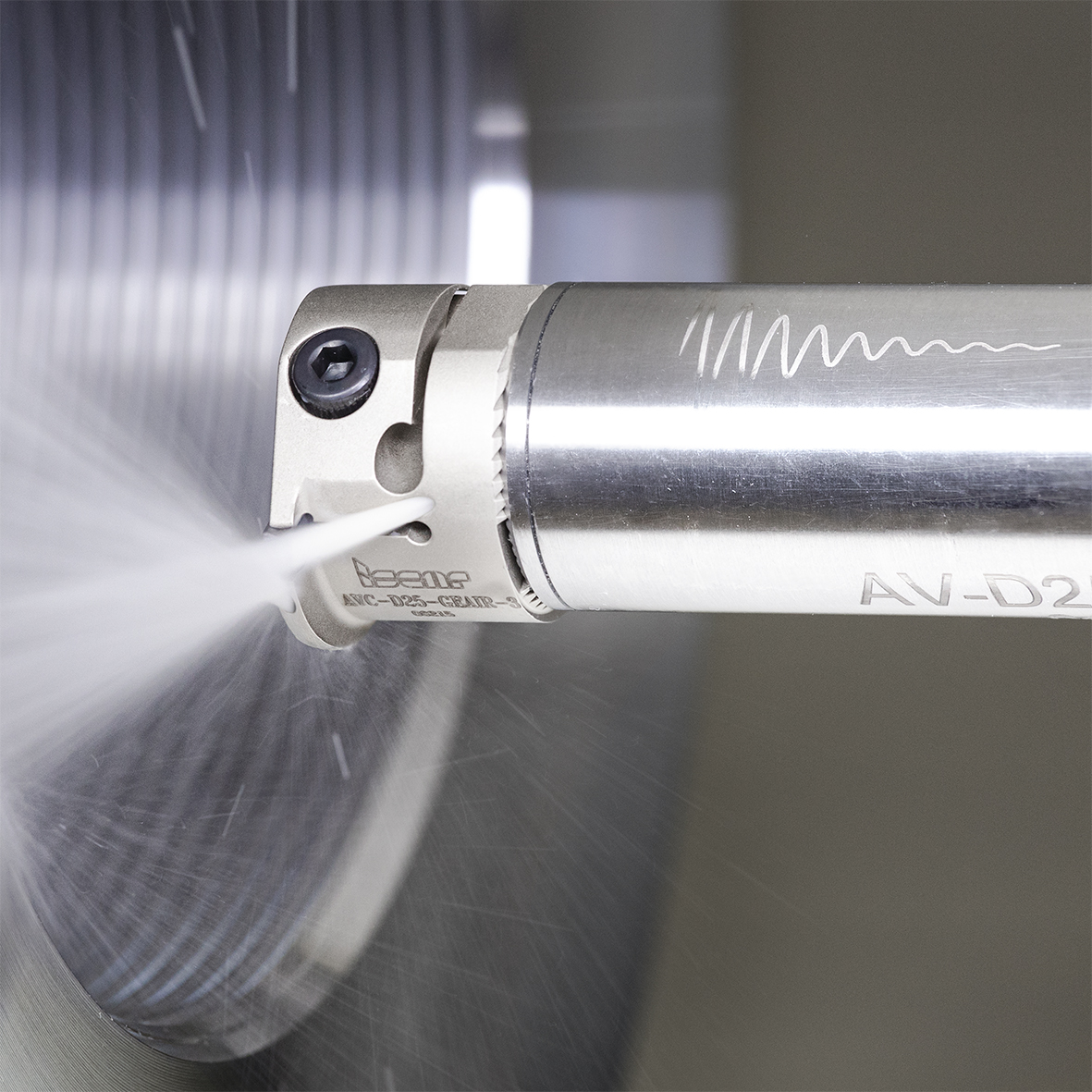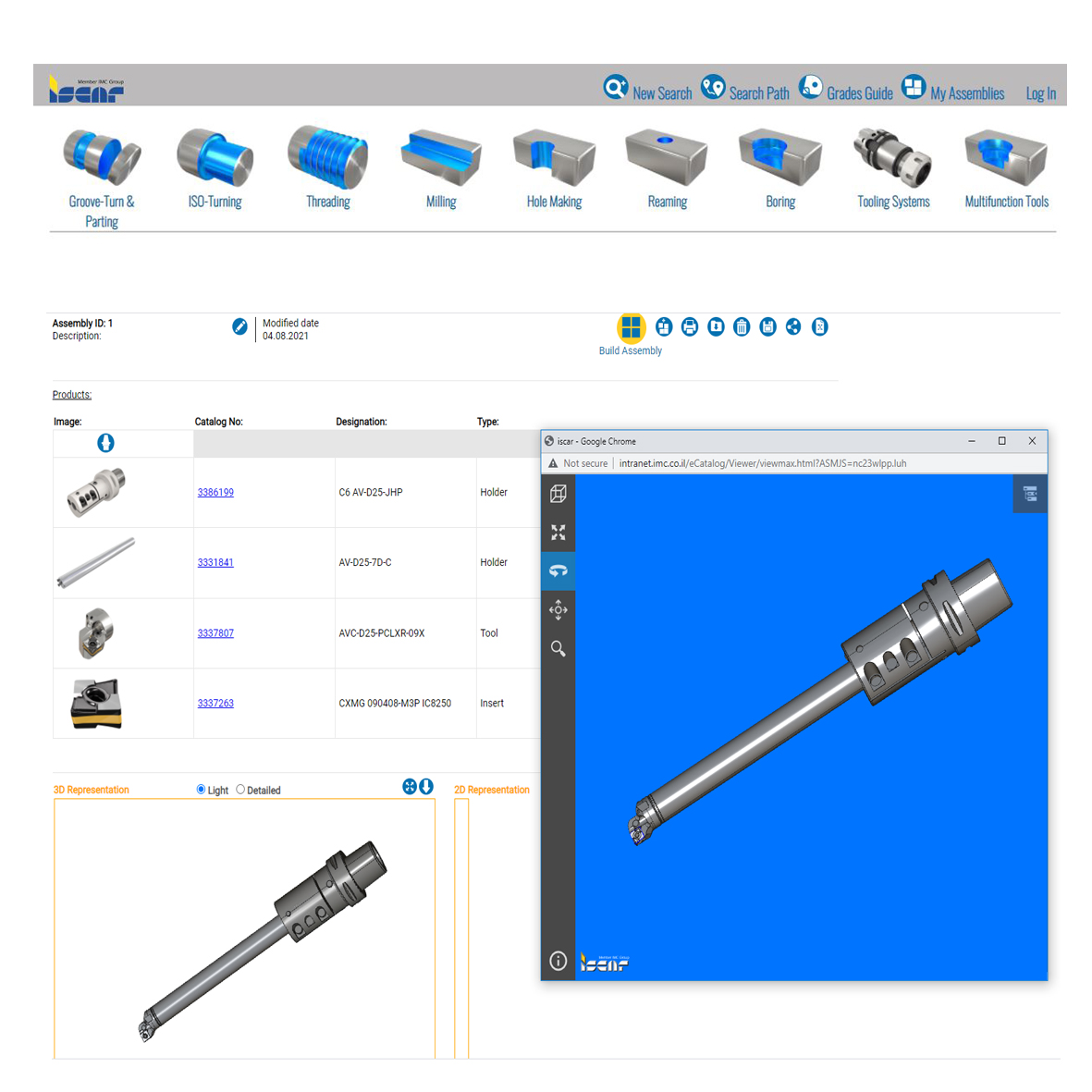Modular systems have succeeded in finding their way into the lives of many people, from LEGO construction toys to IKEA's modular furniture.
In metalworking, typical examples of these systems are unit-built machines and modular fixtures. As for cutting tools, modular structures have proven their efficiency in this area as well, and various tool manufacturers have developed their own modular products that are popular with their customers.
The main benefits of modularity are versatility and time-savings. A modular concept facilitates the quick and easy building of an optimally customized cutting tool using an assembly of standardized elements. Hence, customers don't have to order a costly, specialized tools and wait months for delivery. If a tool is urgently needed for immediate production, a suitable solution is close at hand. This concept contributes to reducing warehouse stock and diminishing inventory lists that cut manufacturing costs.
However, the modular tool concept is not free of disadvantages. The main disadvantage is the decrease of rigidity; an assembly of several elements is not as stiff as an integral product and the assembled structure may lose accuracy when compared to a one-piece design.
When deciding on a particular tool, both advantages and disadvantages of the modular concept need to be considered. The customer is the only one that can decide which is the best tool for his needs based on production strategy, current production demands, or an immediate need of a tool. The cutting tool manufacturer should provide the customer with the means to make the correct choice and at the same time continue to develop modular products that achieve greater adaptability, rigidity, and accuracy. A glance at ISCAR's modular cutting tools makes it possible to showcase the design features of a product.
ISCAR’s FLEXFIT family of tools (Fig.1) is the company’s oldest line. The FLEXFIT adaptation principle is based on using a cylindrical connection for centering and a general-purpose standard metric thread (M8…M16) for securing. Simplicity and maintainability have made this rotating tool system very popular in the market. Today, FLEXFIT has a wide variety of shanks, adapters, and heads with indexable inserts, which are mostly used in milling operations, such as machining complex 3D surfaces, slot, and grooves. The shanks are made from steel and cemented carbide. The carbide shanks increase rigidity, which substantially reduces vibrations especially in long overhang applications.
ISCAR’s MULTI-MASTER is a family of rotating tools with exchangeable heads and comprises modular assemblies (Fig.2). The MULTI-MASTER concept features centering by a short precise taper, face contact and a thread of the unique profile. In turn, this enables a highly accurate and rigid connection that provides significant possibilities for modular tooling where elements include a wide range of shanks, extensions, adapters, and reducers, transforming MULTI-MASTER tools into powerful and reliable cutters.
The shanks are made of steel, cemented carbide with considerable stiffness, and heavy metal, which characterizes good vibration-proof properties. The original MULTI-MASTER design focused only on solid carbide heads, however, within a very short time the family replenished with various heads carrying indexable inserts. It’s not by coincidence that the recently introduced NEOLOGIQ and LOGIQ campaigns include MULTI-MASTER heads with inserts. Specially designed MULTI-MASTER adapters and FLEXFIT mutual connections substantially expand the application range for both families.
For Turning operations, ISCAR developed a modular system that comprises round bars and exchangeable heads with indexable inserts. The bars and heads are assembled with the use of a serrated-face connection (Fig. 3). The system was initially intended for boring, although when selecting a boring bar, the ratio of a required bar overhang to the bar diameter strongly influenced the choice of the right tool.
There are three types of bars to cover the complete range of boring applications for overhang-to-diameter ratios up to 10. Steel bars enable machining with ratios up to 4. Cemented carbide bars facilitate boring with ratios up to 7. However, when machining where a higher overhang is required, the use of a stiffen carbide shank can be somewhat limited. Hence, for ratios 7 to 10, ISCAR developed an anti-vibration bar that significantly reduces and eliminates vibrations when cutting. The key component of these bars is the damping mechanism comprising a heavy mass supported by spring elements.
The success of the bars with exchangeable heads in the boring line led to the introduction of ISCAR’s design concept in various turning, grooving, and threading applications. In addition, the newly developed bars with a serrated-face connection and a polygonal taper shank increase the application field of the system.
Modularity provides a valuable opportunity for the customer to configure a tool in an optimal manner. In today's modern digital world, a great way to achieve this effectively is with a virtual assembly in a CAM software environment. The digital twin representation of a cutting tool based on ISO 13399 standard becomes an integral part of the tool as a product, and leading tool manufacturers have already expanded their portfolios with appropriate virtual counterparts and instrumentation to work alongside. ISCAR's tool assembly options, which are incorporated in the company’s electronic catalog, is a good example of the above-mentioned (Fig. 4). These tool options represent a highly valuable instrument for preliminary processes in selecting tools at the design and planning stages of machining. In modular tooling, they significantly improve the way of finding the most optimal tool configuration, prevent errors on the shop floor, and save time and costs.
Modular cutting tools are more common in the metalworking sector and feature a wide range of products for the success of small-to-medium run productions, die, and mold making.
A flexible modular concept ensures the ability to quickly find effective tool solutions when a product program is constantly changing. This impact of diminishing tool inventory attracts large manufacturers. Consequently, new developments focusing on reliable, accurate, and digital modular tools to meet industrial needs will remain relevant and important in the market.
 [Fig. 1- FLEXFIT family for various assembled milling tools.]
[Fig. 1- FLEXFIT family for various assembled milling tools.]
 [Fig. 2- Multiple MULTI-MASTER product combinations for finding optimally configured tools for various operations.]
[Fig. 2- Multiple MULTI-MASTER product combinations for finding optimally configured tools for various operations.]
 [Fig. 3- Anti-vibration bar with an exchangeable head and serrated-face connection. Significantly expands the application range in boring and threading.]
[Fig. 3- Anti-vibration bar with an exchangeable head and serrated-face connection. Significantly expands the application range in boring and threading.]
 [Fig. 4-Virtual tool assembly options for process planners and technologists.]
[Fig. 4-Virtual tool assembly options for process planners and technologists.]